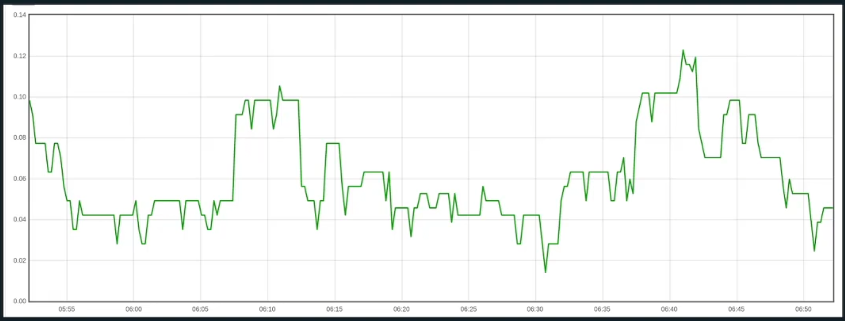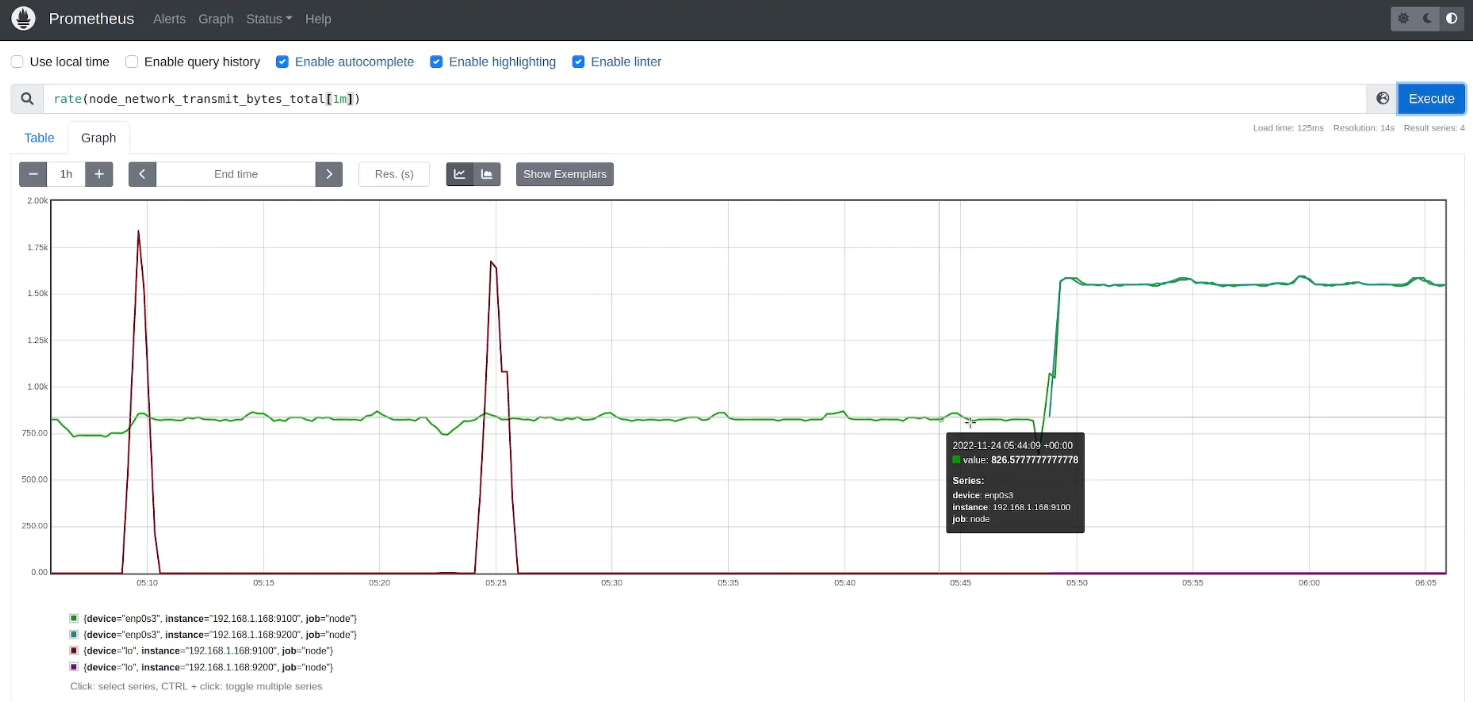Functions
Overview
PromQL includes a variety of functions for performing calculations and transformations on time series data. These functions allow you to manipulate and query your metrics to gain deeper insights.
Math Functions
PromQL provides several mathematical functions to manipulate time series values. These functions allow you to apply standard mathematical operations such as rounding, absolute values, and more.
Consider the sample vector below:
$ node_cpu_seconds_total
node_cpu_seconds_total{cpu="0", mode="idle"} 4526.158
node_cpu_seconds_total{cpu="0", mode="user"} 2084.302
node_cpu_seconds_total{cpu="1", mode="idle"} 2535.042
node_cpu_seconds_total{cpu="1", mode="user"} 981.903
node_cpu_seconds_total{cpu="2", mode="idle"} 5026.302
Using the math functions:
-
ceilfunctionThe
ceilfunction rounds the values of a time series up to the nearest integer.Example:
ceil(node_cpu_seconds_total)Output:
node_cpu_seconds_total{cpu="0", mode="idle"} 4527
node_cpu_seconds_total{cpu="0", mode="user"} 2085
node_cpu_seconds_total{cpu="1", mode="idle"} 2536
node_cpu_seconds_total{cpu="1", mode="user"} 982
node_cpu_seconds_total{cpu="2", mode="idle"} 5027 -
floorfunctionThe
floorfunction rounds the values of a time series down to the nearest integer.Example:
floor(node_cpu_seconds_total)Output:
node_cpu_seconds_total{cpu="0", mode="idle"} 4526
node_cpu_seconds_total{cpu="0", mode="user"} 2084
node_cpu_seconds_total{cpu="1", mode="idle"} 2535
node_cpu_seconds_total{cpu="1", mode="user"} 981
node_cpu_seconds_total{cpu="2", mode="idle"} 5026 -
absfunctionThe
absfunction returns the absolute value of the time series, which makes all negative numbers positive.Example:
abs(node_cpu_seconds_total - 5000)Output:
node_cpu_seconds_total{cpu="0", mode="idle"} 526.158
node_cpu_seconds_total{cpu="0", mode="user"} -2915.698
node_cpu_seconds_total{cpu="1", mode="idle"} -2464.958
node_cpu_seconds_total{cpu="1", mode="user"} -4018.097
node_cpu_seconds_total{cpu="2", mode="idle"} 26.302
Date and Time Functions
PromQL offers several functions to work with time-related data, helping you query and calculate metrics based on time.
time()
Output:
time() 1671536400
To calculate how long the processes have been running:
time() - process_start_time_seconds
Output:
time() - process_start_time_seconds 200000
Other more granular functions are:
| Function | Description |
|---|---|
Minute() | Extracts the minute of the time. |
Hour() | Extracts the hour of the time. |
Day_of_the_week() | Returns the day of the week (0-6). |
Day_of_the_month() | Returns the day of the month (1-31). |
Days_in_month() | Returns the number of days in the month. |
Month() | Returns the month (1-12). |
Year() | Returns the year (e.g., 2024). |
Changing Data Types
We can use vector functions to convert a scalar value into an instant vector.
scalar_to_vector(5)
Output:
scalar_to_vector(5) 5
On the other hand, we can also convert an instant vector into a scalar function:
avg(node_cpu_seconds_total)
Output:
avg(node_cpu_seconds_total) 1234.56
Sorting Functions
PromQL provides sorting functions that allow you to arrange your metrics in ascending or descending order. The example below sorts in ascending order.
$ sort(node_filesystem_avail_bytes)
node_filesystem_avail_bytes{device="sda1", fstype="ext4", instance="node1"} 1023
node_filesystem_avail_bytes{device="sda2", fstype="ext4", instance="node1"} 1587
node_filesystem_avail_bytes{device="sdb1", fstype="xfs", instance="node1"} 2003
node_filesystem_avail_bytes{device="sdb2", fstype="xfs", instance="node1"} 2459
node_filesystem_avail_bytes{device="sdc1", fstype="ext4", instance="node1"} 3067
node_filesystem_avail_bytes{device="sdc2", fstype="ext4", instance="node1"} 3672
node_filesystem_avail_bytes{device="sdd1", fstype="xfs", instance="node1"} 4321
node_filesystem_avail_bytes{device="sdd2", fstype="xfs", instance="node1"} 5184
To sort in descending order:
$ sort_desc(node_filesystem_avail_bytes)
node_filesystem_avail_bytes{device="sdd2", fstype="xfs", instance="node1"} 5184
node_filesystem_avail_bytes{device="sdd1", fstype="xfs", instance="node1"} 4321
node_filesystem_avail_bytes{device="sdc2", fstype="ext4", instance="node1"} 3672
node_filesystem_avail_bytes{device="sdc1", fstype="ext4", instance="node1"} 3067
node_filesystem_avail_bytes{device="sdb2", fstype="xfs", instance="node1"} 2459
node_filesystem_avail_bytes{device="sdb1", fstype="xfs", instance="node1"} 2003
node_filesystem_avail_bytes{device="sda2", fstype="ext4", instance="node1"} 1587
node_filesystem_avail_bytes{device="sda1", fstype="ext4", instance="node1"} 1023
Rate
We can use rate to plot a metric and observe the rate at which it increases over time. To achieve this, we use the rate() and irate() functions, which calculate the per-second average rate of change of a time series over a specified period.
-
rate()- Computes the average rate of change over a time interval.
- Looks at first and last data points within a range.
- Effectively an average rate over the range.
- Best used for counters and alerting rules.
-
irate():- Computes the instantaneous rate of change.
- Based on the most recent two data points.
- Looks at the last two data points within a range.
- Provides a better representation of the instant rate,
- Used for graphing volatile, fast-moving counters.
These functions are useful when monitoring time series metrics, such as counters, to understand how fast the values are changing.


A few important reminders when using rate() and irate() in PromQL:
- Ensure there are at least 4 samples within the given time range for accurate calculations.
- If you have a 15-second scrape interval, a 60-second window will provide 4 samples.
- When combining with an aggregation operator:
- Use
rate()first to detect counter resets. - After applying
rate(), you can aggregate the results with functions likesum().
- Use